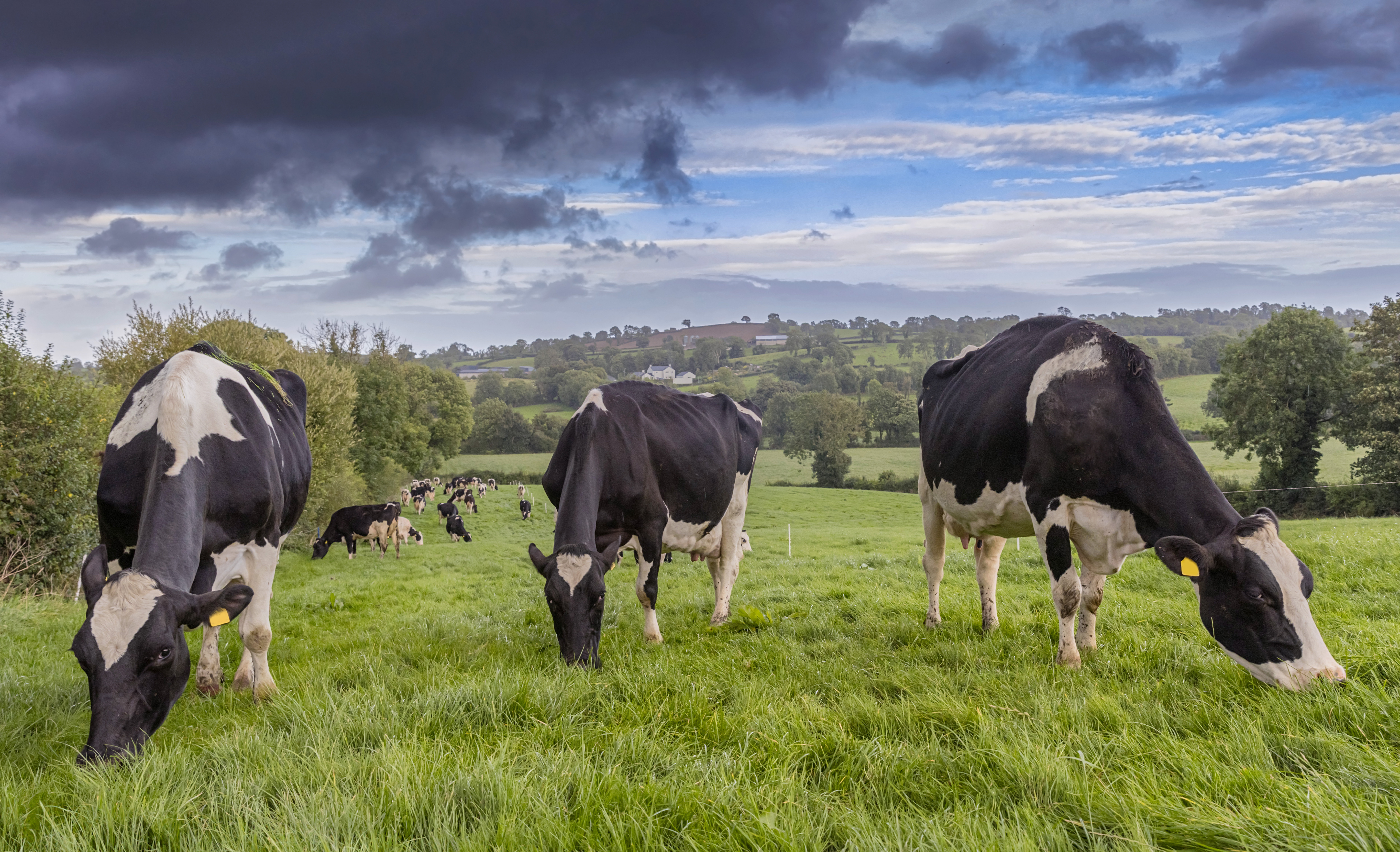Spring Turnout Tips for a Productive Grazing Season
26th March 2025

Transitioning cows from winter diets to fresh spring grass offers an opportunity to increase milk production from forage, reduce concentrate feed costs and improve farm profitability. However, successful grazing management is essential to maintain performance levels and maximise these economic benefits.
The aim: The main objectives of spring grazing management are to gradually increase the proportion of grazed grass in the diet and condition swards for future grazing rotations.
1. Build a Grass Wedge
To transition cows to grazing, use lighter covers to help them adapt while ensuring paddocks are well grazed. Poor cleanouts during the first rotation can negatively affect grass quality in later cycles. Aim for grass covers of 2,700–2,800 kg DM/ha. Short grazing periods during the day help graze off paddocks and promote regrowth for the second rotation, optimising both grass quality and utilisation. Additionally, withhold silage or TMR for an hour before turnout to stimulate the cows’ appetite and encourage grazing.
2. Maintain Rumen Health
A gradual turnout to grazing is crucial to support rumen function and maintain a stable rumen pH. Sudden dietary changes, particularly from conserved forage (e.g., silage) to fresh grass, can cause digestive upsets and disrupt the rumen microbial balance. Lush spring grass is high in energy and protein but low in digestible fibre, which leads to increased rumen passage rates. To prevent issues, introduce fresh grass slowly, starting with a few hours of grazing per day and gradually increasing over several weeks to allow the rumen microbiota to adapt. Rapid turnout to full-time grazing significantly increases the risk of Sub-Acute Ruminal Acidosis (SARA) and Milk Fat Depression (MFD).
3. Dry Matter Intake (DMI) Is Key
Dry Matter Intake (DMI) is the main limiting factor affecting performance at grass. The potential milk yield from grass primarily depends on grass intake. Under optimal conditions, cows can consume 6–7 kg Dry Matter (DM) from grass during daytime grazing and 14–15 kg DM from grass with full-time grazing. DMI is influenced by factors such as grass dry matter content, which is weather-dependent, and grass quality.
Table 1 – Variation in grass dry matter depending on weather conditions.
| Weather | Grass DM% |
| Continuous rain | 10 -13 |
| Mixed sunshine/showers 2nd roation | 14 – 17 |
| 1st rotation in spring/drier weather | 18 – 19 |
| Over week continuous sunshine/high temp | 20 – 21 |
| Drought conditions | 22 – 23 |
NIR testing from the 2024 grazing season found fresh grass after overnight rain/showery conditions had a dry matter of approximately 10% DM.
Supplement with silage or additional concentrates to bridge the energy gap and maintain cow productivity. Overestimating intakes can negatively impact milk yield, milk solids, fertility and body condition score.
4. Suitable Cows for Grazing
Not all cows are equally suited to early spring grazing. The best candidates are mid-to-late lactation cows, particularly those that are past their peak lactation and pregnant (PD+). On the other hand, freshly calved, high-producing cows are less suitable for early spring grazing, as they may struggle to meet their energy demands on a grass-based system.
5. Balance Grass with the Right Concentrate Feeding
Concentrate feeding should be nutritionally tailored to balance fresh grass in the diet. It is recommended to use an 18% crude protein dairy nut for cows grazing by day. Once cows transition to full-time grazing, protein levels can be reduced depending on grass quality. A higher fibre nut will help balance lush grass and promote rumen function. Including Acid Buff and Actisaf Yeast in the diet supports rumen health, reduces the risk of SARA, and minimizes the chances of Milk Fat Depression (MFD). Additionally, ensure magnesium supplementation is adequate, especially when silage is removed from the diet.
Properly managing the spring grazing transition sets the foundation for a productive and profitable grazing season.
For more information, contact your local Fane Valley Feeds Representative or call 028 82243221


